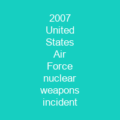The Alsos Mission: A Secretive Quest for Enemy Scientific Developments
Imagine a covert operation, shrouded in secrecy and mystery, where brilliant minds raced against time to uncover the secrets of Nazi Germany’s military might during World War II. This was the Alsos Mission—a daring endeavor that combined the forces of British and American intelligence, scientific expertise, and military prowess.
Origins and Leadership
The Alsos Mission was born out of a need to coordinate foreign intelligence related to enemy nuclear activities. In September 1943, Colonel Boris Pash was appointed by Major General George V. Strong to lead this clandestine operation. Pash’s team included Captain Wayne Stanard and four Counter Intelligence Corps agents, along with four scientists. The codename ‘Alsos’ (meaning ‘grove’ in Greek) was chosen, though it didn’t quite sit well with Groves, who saw no significant change in attention.
Operational Scope
The mission’s primary focus was on uncovering Nazi Germany’s nuclear technology, chemical and biological weapons, and the V-2 rocket program. The Manhattan Project took over coordination of these efforts, making the Alsos Mission a crucial part of the Allied intelligence network.
Early Missions in Italy
The Alsos team began their journey in Italy, where they interviewed Italian scientists and examined captured documents. Rome’s fall on June 4, 1944, marked a significant shift as Pash returned with S-Force to secure key sites and take senior personnel into custody.
Expansion and Success
The mission expanded in March 1944 when Major George Pash took command of the new Alsos Mission for western Europe. Lieutenant Colonel Eckman served as his deputy, and by August, the team had grown to include seven officers and 33 scientists. Their efforts led them to uncover uranium processing plants and interview key German scientists like Walther Bothe and Richard Kuhn.
Strasbourg and Beyond
The Alsos Mission’s success in Strasbourg was pivotal. They discovered that Germany had not developed a practical process for uranium enrichment, effectively ruling out the possibility of an atomic bomb. The team continued their work, dismantling experimental reactors and capturing key scientists.
Final Days and Legacy
The Alsos Mission’s final days saw them operating behind enemy lines with Task Force A, led by Pash himself. They encountered German scientists at Freudenstadt, captured an experimental nuclear reactor, and eventually secured the 13th Airborne Division to occupy a strategic area.
Conclusion
The Alsos Mission’s legacy is one of perseverance and ingenuity in the face of adversity. While it may not have directly contributed to the Allied defeat of Nazi Germany, its role in post-war scientific developments cannot be understated. The mission’s success lies in its ability to adapt and overcome challenges, much like a skilled detective piecing together clues.

The Alsos Mission stands as a testament to the power of collaboration and intelligence in shaping history. Its story is one of determination, secrecy, and the relentless pursuit of knowledge—a true tale of wartime ingenuity.
You want to know more about Alsos Mission?
This page is based on the article Alsos Mission published in Wikipedia (retrieved on November 28, 2024) and was automatically summarized using artificial intelligence.







